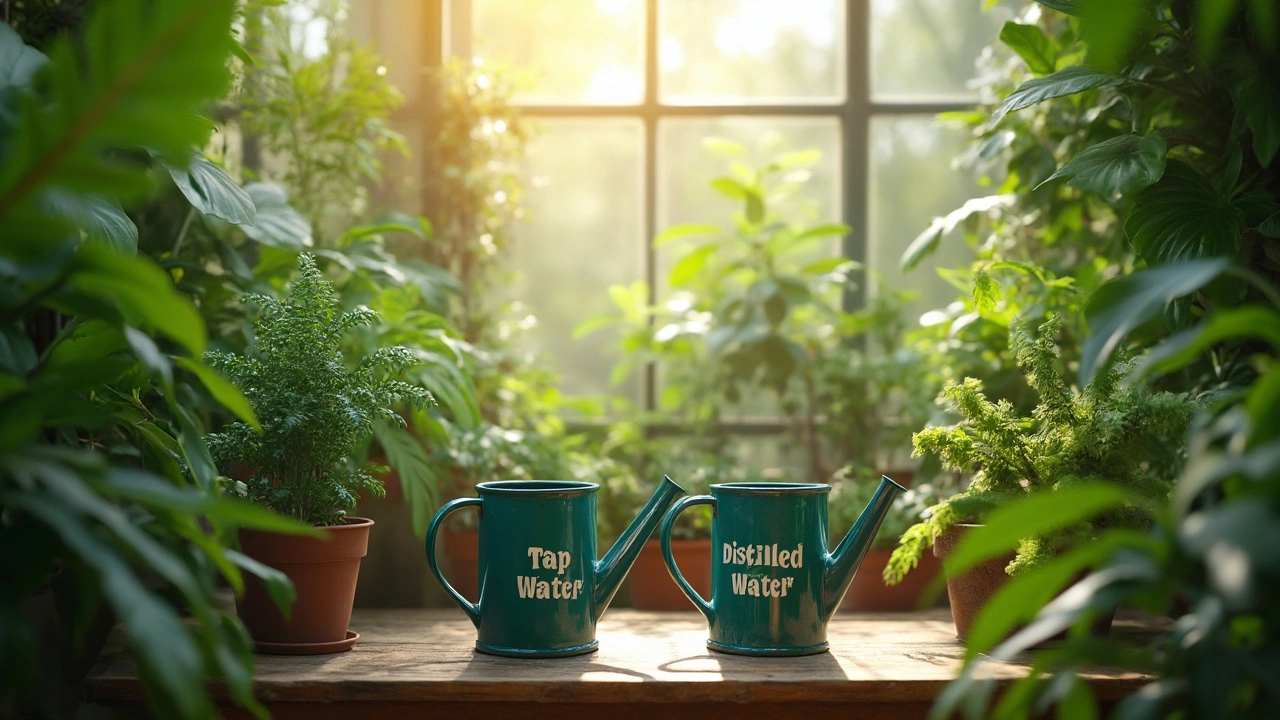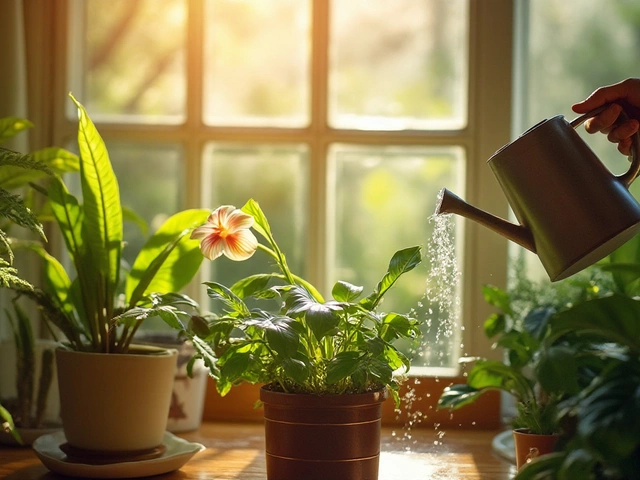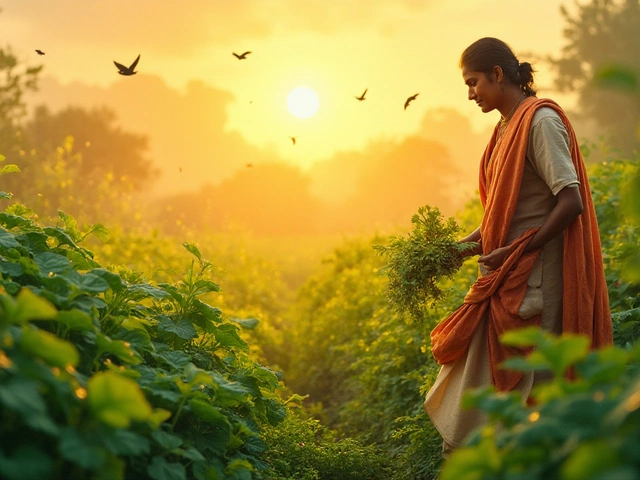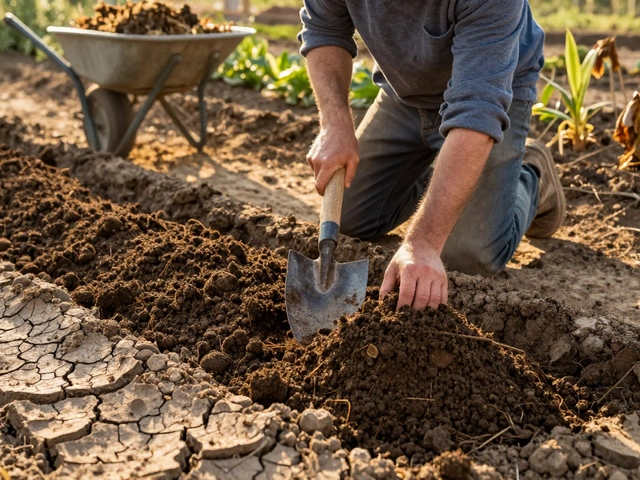So, you've probably wondered if there's really any difference between giving your plants distilled water or just turning on the tap. Turns out, it’s not as straightforward as you might think. The water you use can change the game for your indoor jungle.
Distilled water is essentially purer than tap water. Why? Because it goes through a distillation process that removes minerals, salts, and other impurities. Sounds fancy, right? But, when it comes to using it for plants, you have to weigh the pros and cons.
On the flip side, tap water often contains minerals and chemicals like chlorine and fluoride, which might not be plant-friendly. These could actually pile up in the soil over time, affecting the plant's ability to absorb water and nutrients. Can your plants handle it? Well, it depends on what kind of indoor flora you’re tending.
- Understanding Distilled Water
- What's in Tap Water?
- How Water Quality Affects Plants
- Choosing the Right Water for Your Plants
- Simple Tips for Watering Indoor Plants
- Common Mistakes to Avoid
Understanding Distilled Water
So, what’s the big deal with distilled water? It all starts with how it's made. Distillation is like science class magic. Water is boiled until it turns into steam, leaving behind any minerals, impurities, or contaminants. That steam is then cooled and collected, turning back into liquid form. The result? Water that’s about as pure as it gets.
But how does this matter for your indoor plants? Well, with distilled water, you don't have to worry about stuff building up in the soil over time. No extra salts or minerals sneak in, which can keep your plant babies happy and healthy. This is super helpful for plants that are sensitive to mineral concentrations, like orchids or peace lilies.
Some folks might think, "If it’s so pure, why isn’t everybody using it all the time?" Good question. Pure doesn’t always mean better in all ways. Plants do need some minerals that might not be present in distilled water. Plants usually get these nutrients from both soil and water, meaning you might need to add a little extra food to their watering routine if you go the distilled route.
Here's something interesting: a NASA study found that certain houseplants can thrive on distilled water, giving them a clean slate, so to speak. On the practical side, it's a choice that can lead to fewer worries about what’s lurking in tap water, but it might require a bit more balancing with fertilizers.
What's in Tap Water?
Alright, let’s talk about what’s really flowing out of that faucet. Your tap water isn't just plain H2O; it comes with a few extras. And by extras, I mean it’s often treated with chemicals and may contain minerals picked up along the way.
Chlorine is usually the big one—it’s added to kill off harmful bacteria. But while it’s fine for us, sometimes too much chlorine isn’t great for your indoor plants. It can mess with the soil and stress out your leafy pals.
Then there’s fluoride, added to help keep our teeth healthy. It’s usually harmless but might build up in the soil over time, especially if you’ve got sensitive plants. And minerals like calcium and magnesium can be present, which are okay in small amounts but might lead to chalky residue.
Generally, these minerals form what's known as 'hard water'. You might see signs of hard water with a white film on plant leaves or soil surface. If you’ve ever noticed a spotty film on your shower door, you’ve got hard water to thank for that.
Check out this quick rundown of common tap water contents:
| Element | Purpose |
|---|---|
| Chlorine | Disinfect water |
| Fluoride | Help dental health |
| Calcium and Magnesium | Occurs naturally, can lead to hard water |
If the thought of using tap water makes you uneasy, there are ways to make it more plant-friendly. Leaving the water out for a day will let chlorine evaporate. Or, use a simple filter to reduce mineral content. Just a couple of hacks to keep those plants thriving!
How Water Quality Affects Plants
Water quality plays a big role in the health of your indoor plants. If we dive into what's in the water, it becomes clear why it matters. You see, both tap water and distilled water come with their own sets of challenges and benefits.
Let's break it down: tap water usually has added chemicals like chlorine to make it safe for humans, but these aren't great for your leafy friends. Over time, these chemicals can build up in the soil and affect how well your plants absorb water. Have you ever noticed a white crust on the surface of your plant’s soil? That’s often a sign of excessive mineral buildup.
Now, distilled water is a different beast. It's super pure because the distillation process removes minerals and impurities. That means no chlorine, fluoride or pesky minerals that can mess with your plant’s mojo. So, if you're nurturing sensitive plants like orchids or some tropical pals, distilled water might just be your plant's best friend.
But before you go pouring only distilled water for all your plants, consider this: some plants actually benefit from the minerals found in tap water. These minerals can act as a natural fertilizer. The trick is finding the balance and understanding what your specific plants prefer.
Now, you might wonder, "What's the real difference in terms of plant growth?" Well, while there's no one-size-fits-all answer, many plant owners swear by distilled water for avoiding issues like wilting leaves or brown tips.
Table: Effects of Water Type on Plant Health
| Water Type | Positive Effects | Negative Effects |
|---|---|---|
| Tap Water | Provides minerals | Risk of chemical buildup |
| Distilled Water | Avoids chemical additives | May lack necessary minerals for some plants |
So, keep in mind: it’s all about understanding your plants’ needs. Check how they react to different types of water over time, and adjust as necessary. This way you’ll ensure your plants keep thriving in whatever mini-jungle setup you've got going.
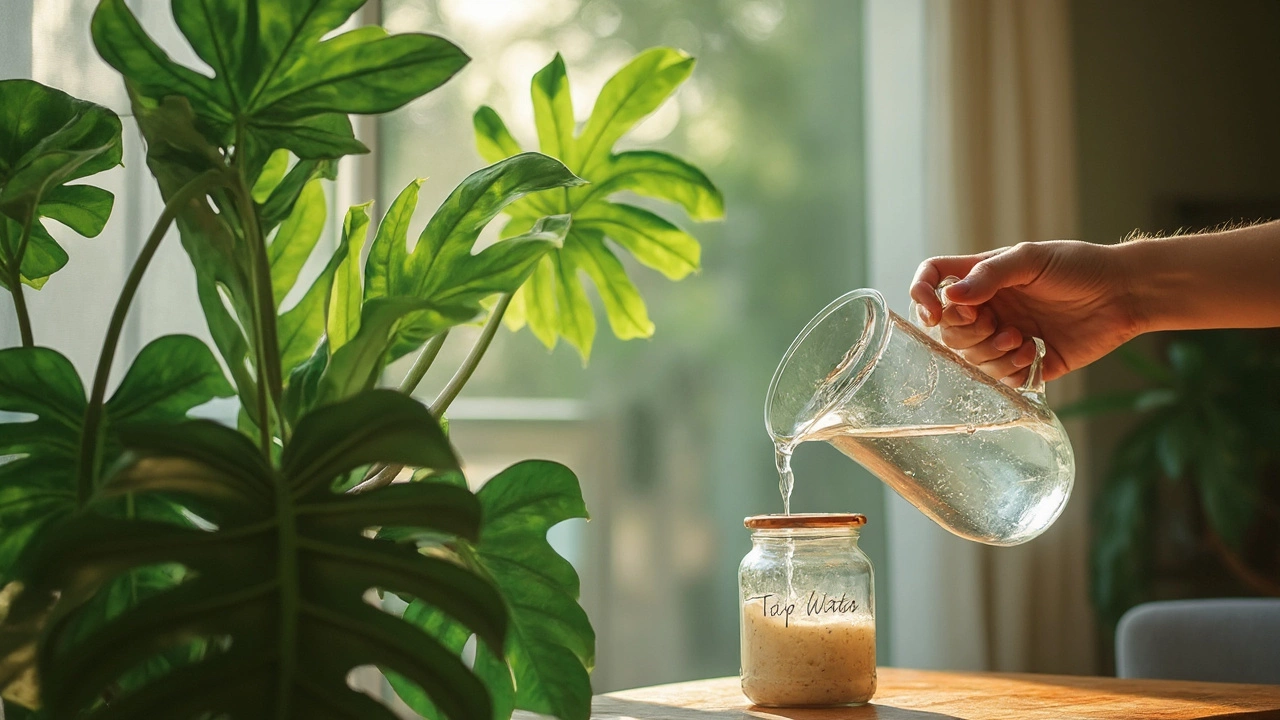
Choosing the Right Water for Your Plants
Picking the right water for your indoor plants can be a big deal, especially if you want them to look their best. Let’s break down why it matters and how to make the best choice for your green buddies.
First off, if you're using distilled water, it means your plants are getting H2O without any added extras like minerals or chemicals. This can be ideal for certain plants, especially those sensitive to mineral build-up. Think about your orchids or carnivorous plants—they’re particular about what they drink.
But what if you're thinking about sticking to the convenient stuff—tap water? For hardy plants like pothos, spider plants, or peace lilies, tap water can do the trick. Just watch out for signs like brown tips on the leaves; it's their way of saying, "Hey, there's too much chlorine!"
Here’s how to make sure your plants are getting the best:
- If you use tap water, let it sit out for 24 hours before watering to let chlorine evaporate. But remember, this doesn't deal with hard water minerals.
- Consider using a water filter to reduce impurities in the tap water. It can be a game-changer for those more sensitive plants.
- Rainwater collected in a clean container is another great option; it's free and what most plants would naturally get in the wild.
Check out this simple table for a quick comparison:
| Water Type | Benefits | Drawbacks |
|---|---|---|
| Distilled | No impurities, ideal for sensitive plants | Lacks beneficial minerals, less accessible |
| Tap | Easy access, contains natural minerals | May contain chlorine, fluoride |
| Rainwater | Natural, full of beneficial oxygen | Seasonal availability, contamination risk |
Ultimately, your choice depends on the specific needs of your plants. Keep an eye on how they react and tweak your watering routine as needed. It’s all about playing plant detective and listening to what your green friends are telling you!
Simple Tips for Watering Indoor Plants
Watering your indoor plants doesn't have to be rocket science, but it does need a bit of thought to keep those greens happy. Here are some down-to-earth tips that can make a real difference.
First off, know your plants. Different plants have different needs. A cactus won't need water as often as a fern. So, it pays to get familiar with how thirsty your plants are.
Keep an eye on the soil. Stick your finger about an inch into the dirt. If it feels dry, it's time to water. Wet? Give it a break.
Water in the morning if you can. Plants find it easier to soak up water and the sun helps dry out any excess, preventing moldy roots.
Want an expert take? Here's a quote from Nathaniel Weaver, a plant enthusiast and author:
"It's not just about the amount of water, but the quality. Using distilled water can prevent mineral build-up, especially in sensitive plants."
And let’s not forget drainage. Make sure your pots have holes so extra water can escape. Nobody likes soggy roots!
- Distilled water is a safe bet for most plants as it avoids those pesky chemicals in tap water.
- Consider using room temperature water – it’s less of a shock to the plant’s system.
- For tap water lovers, let it sit out overnight before using. This allows some chemicals to evaporate.
- Invest in a moisture meter if you’re unsure when to water. It's a nifty gadget that takes out the guessing game.
Taking the time to understand these tips sets you up for having indoor plants that thrive, not just survive. Happy watering!
Common Mistakes to Avoid
Watering your indoor plants seems pretty straightforward, right? Well, there are a few traps you might fall into without even realizing. Let’s clear up some of the common goofs that could be holding your plants back.
First up, while tap water is convenient, relying solely on it can be a mistake if it's heavily treated with chlorine or fluoride. Too much of these additives can mess with your plant's health. Letting tap water sit out for 24 hours before using it can help some of the chemicals dissipate.
Ever wonder if using distilled water exclusively is the way to go? Think again. Plants need minerals like magnesium and calcium, which distilled water lacks. Balance is key. Mix it up if you can, or supplement with nutrient-rich soil or fertilizers.
Now, another oversight is watering too often. It's easy to overwater if you're not careful. Most plants prefer a good soak and then a chance to dry out, so always check the topsoil's moisture before you grab the watering can.
- Avoid wetting the leaves too much. Watering early in the day is better because it reduces the chance of fungal diseases.
- Don’t forget about drainage. Make sure your pots have holes so excess water can escape.
- Stick to a routine. Sudden changes in watering habits can stress your plants out.
A quick tip: If you're not sure, many nurseries and gardening apps can provide specific advice for your type of plant and local water conditions.
Being mindful of these pitfalls could make a big difference in how lush and healthy your indoor greenery stays.
